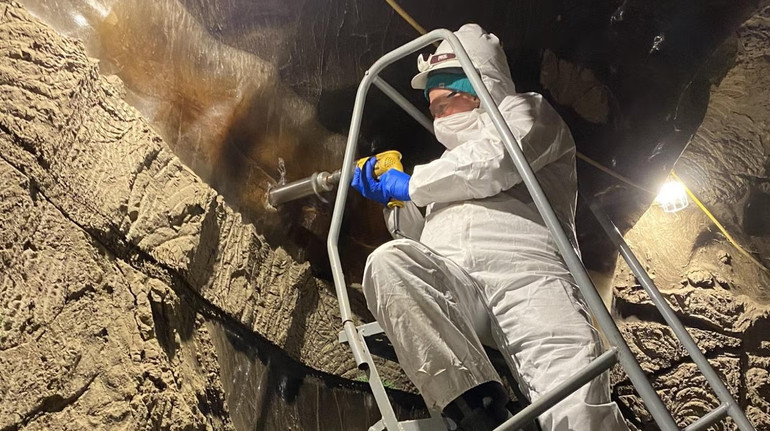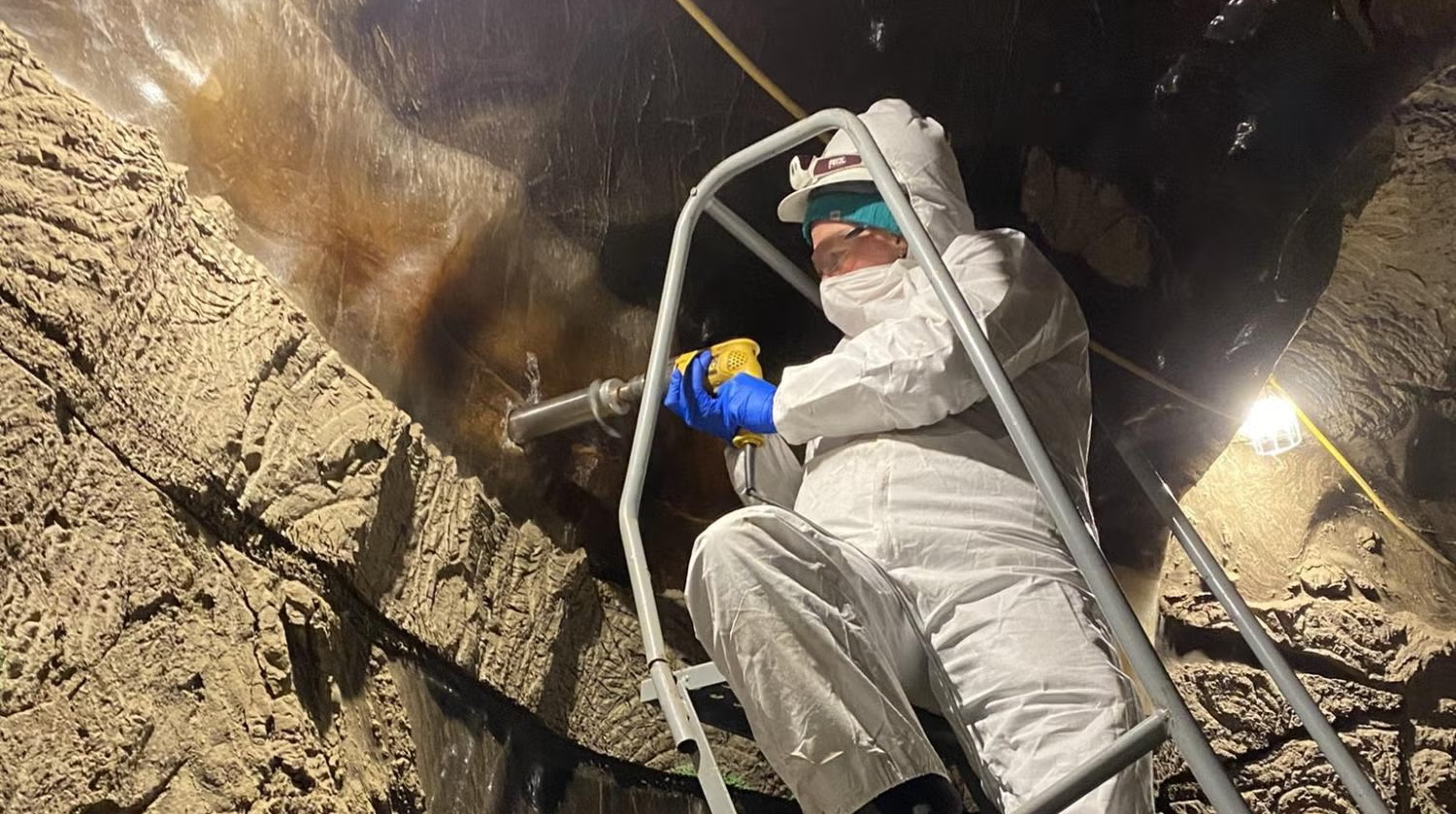“
 Scientists tried to study the behavior of germs in the event of stronger warming
Scientists tried to study the behavior of germs in the event of stronger warming
Photo: Tristan Karo
This is stated in the study, Posted In JGR Biogeosciences, informs Popular Science.
Samples of prehistorical bacteria, scientists have selected in the unique underground tunnel of the research center.
“The first thing you notice when you go there is a very bad smell. It smells of a musty basement that has not been ventilated for too long. For a microbiologist it is very exciting – interesting smells are often microbial”– said geologist Tristan Karo.
Scientists have selected samples of eternal permafrost, each of which contained thousands of bacteria. Subsequently, the germs were “revived” to find out what the planet should be expected in the event of an even greater increase in temperatures.
Experts are concerned that the melting of eternal permafrost will release more germs. These organisms feed on organic matter and release methane and carbon dioxide, so they can lead to the formation of a closed cycle.
Scientists “resuscitated” germs by adding water to the samples. Then they placed them at 4 to 12 ° C.
“We wanted to model what would happen in the summer in Alaska under future climatic conditions, when such temperatures reach deeper sections of eternal permafrost”– explained Tristan Karo.

Usually bacteria are updating their population by dividing cells for several hours. However, in the samples of eternal permafrost, this process was extremely slow. At the beginning, germs needed a day to replace about 1 cell for every 100,000 in a colony.
Six months later, scientists recorded the “explosion” of populations. Some colonies grew so rapidly that they formed a biofilm that could be seen without a microscope.
Scientists believe that this has contributed not so much to the impact of suddenly higher temperatures, but also a long stay in these conditions.

“It can be one hot day in the summer in Alaska, but much more important (for bacteria – ed.) So that the summer season lasts longer and such temperatures are still in the fall and spring,” Karo explained.
It is still unclear why millennial microorganisms behave so after leaving “hibernation”.
Although the authors doubted that bacteria from Alaska samples could infect people, they still kept them in a regulated, closed environment.
Earlier in the United States recorded an increase in cases deaths through a bacterium that “eats the body.”

”, – WRITE: www.pravda.com.ua
 Scientists tried to study the behavior of germs in the event of stronger warming
Scientists tried to study the behavior of germs in the event of stronger warming
Photo: Tristan Karo
This is stated in the study, Posted In JGR Biogeosciences, informs Popular Science.
Samples of prehistorical bacteria, scientists have selected in the unique underground tunnel of the research center.
“The first thing you notice when you go there is a very bad smell. It smells of a musty basement that has not been ventilated for too long. For a microbiologist it is very exciting – interesting smells are often microbial”– said geologist Tristan Karo.
Scientists have selected samples of eternal permafrost, each of which contained thousands of bacteria. Subsequently, the germs were “revived” to find out what the planet should be expected in the event of an even greater increase in temperatures.
Experts are concerned that the melting of eternal permafrost will release more germs. These organisms feed on organic matter and release methane and carbon dioxide, so they can lead to the formation of a closed cycle.
Scientists “resuscitated” germs by adding water to the samples. Then they placed them at 4 to 12 ° C.
“We wanted to model what would happen in the summer in Alaska under future climatic conditions, when such temperatures reach deeper sections of eternal permafrost”– explained Tristan Karo.

Usually bacteria are updating their population by dividing cells for several hours. However, in the samples of eternal permafrost, this process was extremely slow. At the beginning, germs needed a day to replace about 1 cell for every 100,000 in a colony.
Six months later, scientists recorded the “explosion” of populations. Some colonies grew so rapidly that they formed a biofilm that could be seen without a microscope.
Scientists believe that this has contributed not so much to the impact of suddenly higher temperatures, but also a long stay in these conditions.

“It can be one hot day in the summer in Alaska, but much more important (for bacteria – ed.) So that the summer season lasts longer and such temperatures are still in the fall and spring,” Karo explained.
It is still unclear why millennial microorganisms behave so after leaving “hibernation”.
Although the authors doubted that bacteria from Alaska samples could infect people, they still kept them in a regulated, closed environment.
Earlier in the United States recorded an increase in cases deaths through a bacterium that “eats the body.”

